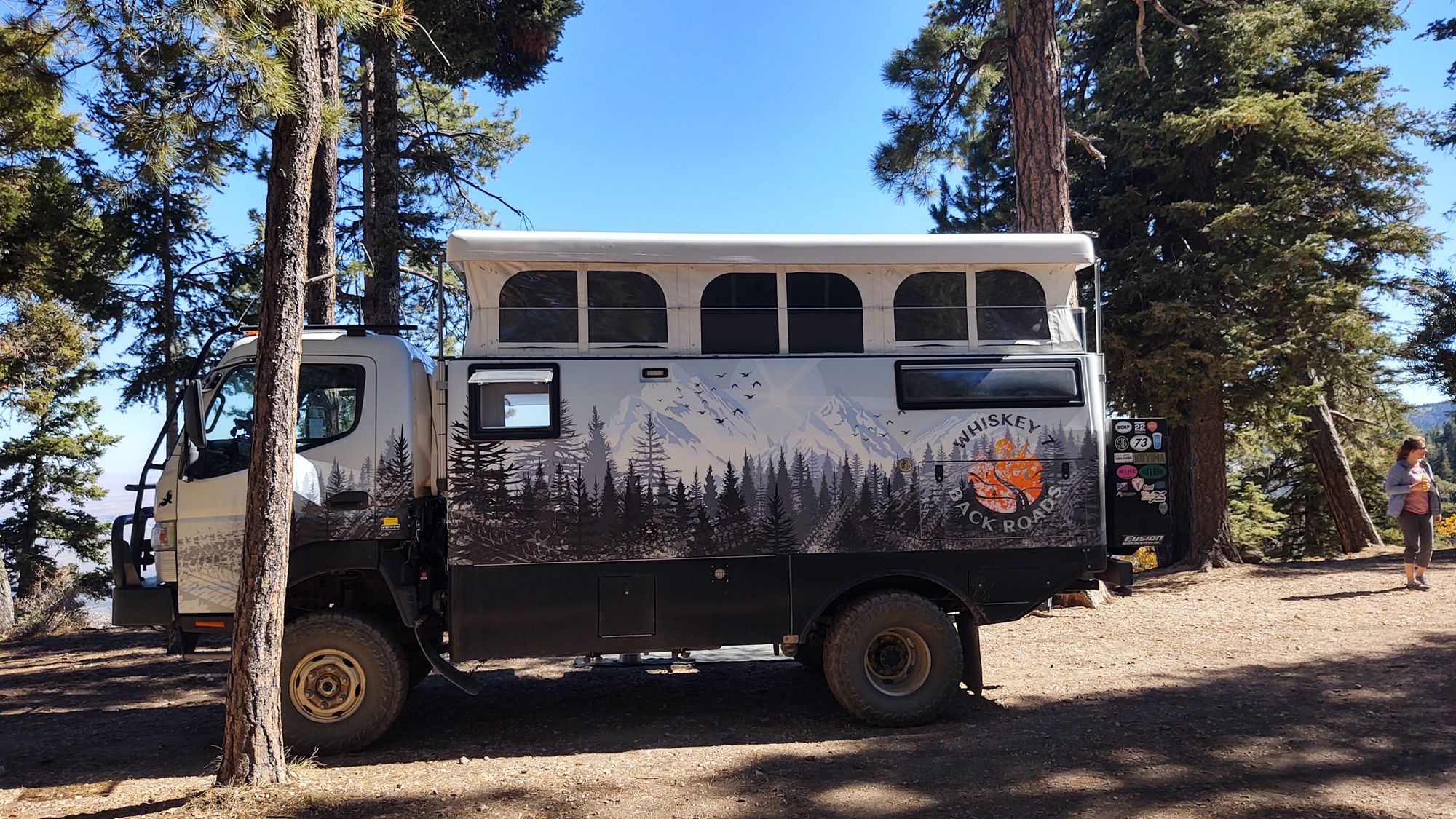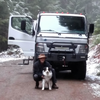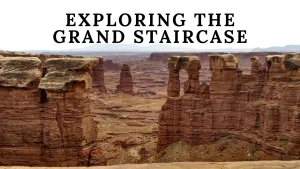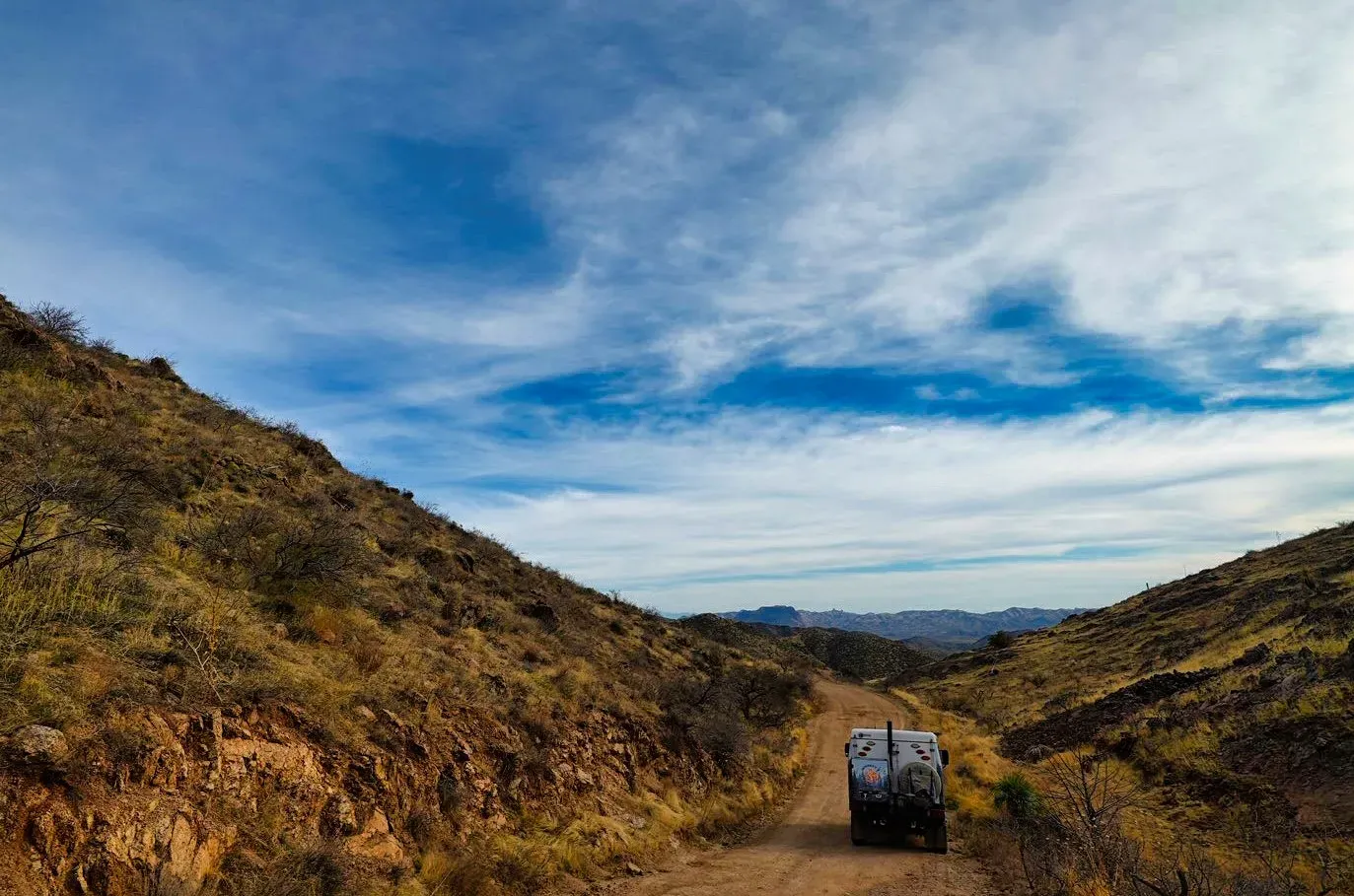The Grand Staircase-Escalante National Monument, spanning nearly 1.87 million acres in southern Utah, is a beacon for overlanders and adventurers alike. This vast wilderness, known for its grandiose landscapes—comprising the Grand Staircase, Kaiparowits Plateau, and Escalante Canyons—captures the essence of untamed nature. It's a territory where the profound quietude and solitude offer not just a retreat, but an extraordinary canvas for scientific research, education, and an array of recreational activities from hiking to canyoneering.

Embarking on a journey through the Grand Staircase-Escalante National Monument promises an unparalleled overlanding adventure. This guide aims to navigate the sprawling regions of the monument—each with its unique geological marvels and historical tapestry. Expect insights into planning your trip, selecting campsites, essential gear recommendations, and traversing the challenges of this rugged landscape. As we explore the grandeur of the Grand Staircase, the mystique of the Kaiparowits Plateau, and the serene canyons of Escalante, the grand staircase-escalante national monument map becomes an indispensable tool, guiding us through the heart of Utah's majestic wilderness.
Planning Your Journey
Essential Preparations and Considerations
- Vehicle Requirements and Road Conditions: Before setting out on your adventure in the Grand Staircase-Escalante National Monument, ensure your vehicle is up to the task. All roads within the monument require high-clearance vehicles due to their rugged nature. Additionally, be prepared for the possibility of getting lost, breaking down, or running out of water, as the monument is purposely unimproved. Always carry extra supplies and be ready for self-rescue.
- Permits and Regulations: A free backcountry permit is necessary for overnight camping, obtainable from any of the monument’s visitor centers. Familiarize yourself with local regulations; for instance, dispersed camping is allowed but must be coordinated with a backcountry permit. Always check with local land managers for road closures and conditions to avoid any inconveniences during your trip.
- Safety and Navigation: Traveling in groups is highly recommended for safety reasons, as cell phone coverage is limited, and emergency services may not be readily accessible. Plan your route carefully, check the weather forecast regularly, and make sure to inform someone of your itinerary and expected return time. For navigation, consider using tools like Google Maps and Gaia GPS to help guide your journey through the monument.
By adhering to these guidelines, you can ensure a safer and more enjoyable experience as you explore the vast landscapes of the Grand Staircase-Escalante National Monument.
Navigating the Grand Staircase
Escalante Canyons: A Hiker's Paradise
Navigating the Grand Staircase-Escalante begins with the Escalante Canyons, the monument's most frequented area. Known for its extensive network of trails, this section provides access to breathtaking waterfalls, natural arches, and the serenity of narrow canyons. The trails here vary in difficulty, offering something for both the novice and the experienced hiker.
The Remote Grand Staircase
For those seeking solitude and a more challenging experience, the Grand Staircase area offers a rugged, less-traveled path. This part of the monument is characterized by a series of colorful cliffs that form a majestic, step-like ascent from the Grand Canyon up to Bryce Canyon. The cliffs display a stunning palette that transitions from chocolate browns to vibrant vermillion, soft whites, and striking grays, culminating in delicate pinks. This area sees fewer visitors, making it an ideal spot for those looking to escape the more crowded sites and immerse themselves in unspoiled nature.

Kaiparowits Plateau: Remote and Unyielding
The Kaiparowits Plateau stands as the most secluded section of Grand Staircase-Escalante. Dominated by expansive sedimentary rock formations, this area offers some of the most scenic drives and breathtaking vistas within the monument. The remoteness of the Plateau adds to its appeal, providing a sense of isolation and tranquility that is hard to find elsewhere. Here, adventurers can drive along dusty backroads, each turn and crest revealing landscapes that feel untouched and timeless.
Top Overlanding Trails and Sites
Essential Overlanding Trails
- Hole-in-the-Rock Road: Stretching 56 miles, this dirt road is ideal for high-clearance 4WD vehicles, especially following rain. It features key attractions like the Hole-in-the-Rock, Devil's Garden, and Dance Hall Rock, offering a blend of historical sites and stunning natural landscapes.
- Smokey Mountain Road: At 26 miles long, this route provides breathtaking views and numerous campsites, making it perfect for extended stays in the wilderness. The road is suited for vehicles that can handle rough terrain, ensuring an adventurous ride through the heart of the Grand Staircase.
- Cottonwood Canyon Road: This 47-mile trail passes through diverse landscapes, including the striking Grosvenor Arch and the colorful Kodachrome Basin State Park. It's another route requiring a high-clearance 4WD, with several campsites available for overlanders looking to explore the area over multiple days.
- Burr Trail: Unlike the others, this 66-mile road is paved and accessible by all vehicle types. It offers a variety of natural and cultural points of interest, such as Long Canyon, Bullfrog Marina, and access to Capitol Reef National Park, with convenient campsites along the route.
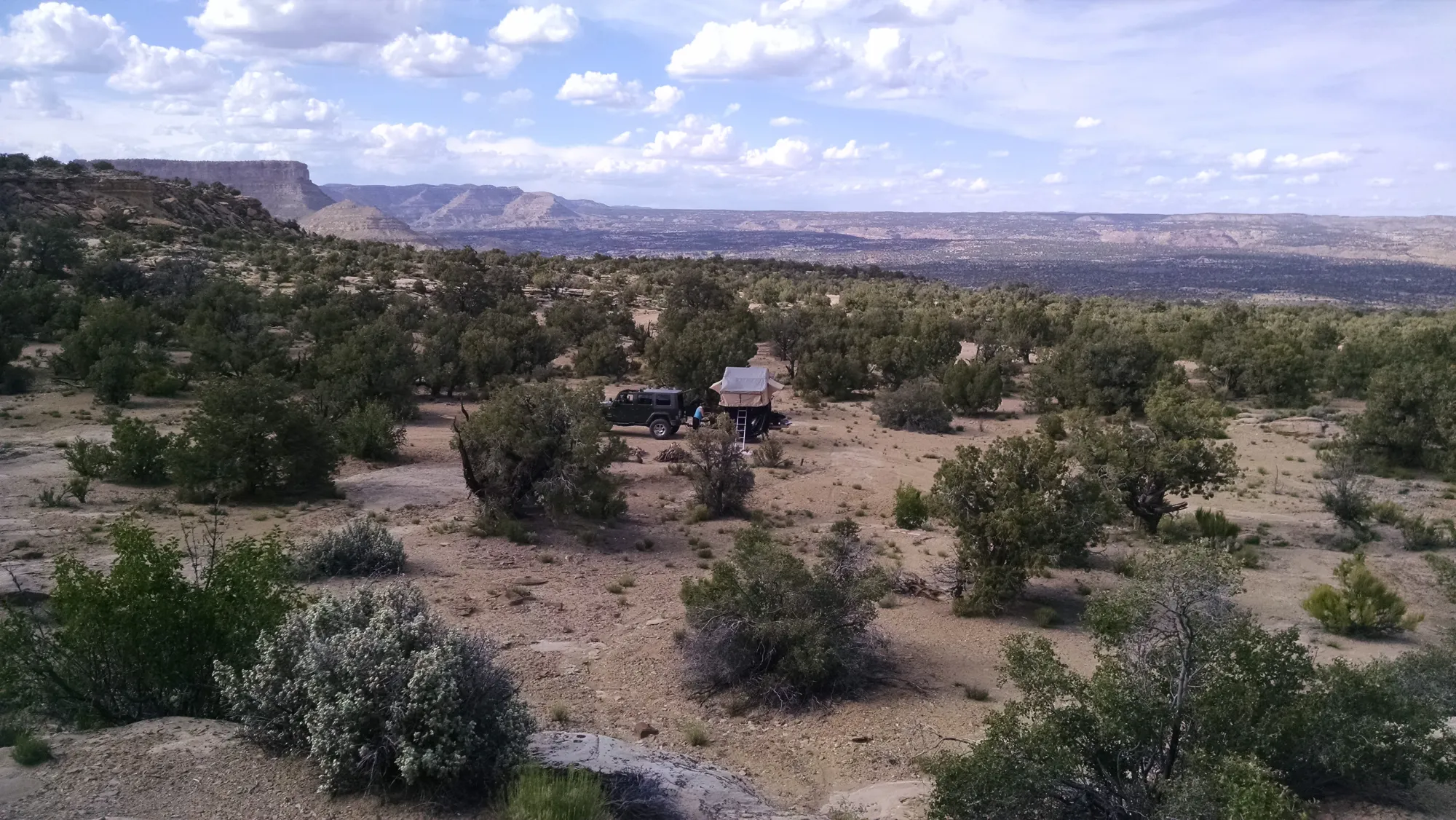
Points of Interest and Activities
The Grand Staircase-Escalante National Monument is not just about the roads; it's about what you can discover along them. From the isolated Kaiparowits Plateau with its pinyon-juniper woodlands to the adventurous Escalante Canyons, where hikers can explore slot canyons and natural arches, there's plenty to see and do. Activities here are predominantly focused on hiking and enjoying the scenic bodies of water that dot the landscape.
Comprehensive List of Overlanding Trails
For those planning a thorough exploration, here's a more comprehensive list of trails to consider, each offering unique experiences and challenges:
- Hole In The Rock Road
- Hells Backbone - NF153
- Aquarius Teasdale - NF154
- Powell Point Trail
- Smoky Mountain Road
- Croton Road
- Cottonwood Canyon Road
- Tantalus Flat - NF30168
- Burr Trail Switchbacks
- Nipple Butte Trail
- Loa Great Western Trail
- Dave's Hollow Cutoff
- Panguitch to Casto Canyon and Casto Bluff Loop
- Tropic Reservoir Road
- Skutumpah Road
- Deep Creek Lake Road
- Glen Canyon Rec Road 340-230
- Smoky Mountain Road (Glen Canyon Section)
- Henry Mountain Road, Loop & Sand Wash
- Alstrom Point - Rec Road 264
- Nothing to See Here Trail
- Papa Bear Poker Run 2021
- Elkhorn Road
- Straight Canyon
- South Mytoge
- Baker Ranch Road
- Tropic Reservoir Road (Private Easement Section)
- Geyser Peak Trail
- As Above So Below.
This diverse selection ensures that whether you're looking for a challenging drive or a scenic, leisurely route, the Grand Staircase-Escalante has something to offer every overlander.
Campsite Selection and Etiquette
When planning to camp in the Grand Staircase-Escalante National Monument, it's essential to know the options and rules to ensure a responsible and enjoyable experience. The monument offers three developed campgrounds, available on a first-come, first-served basis, providing a structured camping environment. For those seeking a more rugged experience, dispersed camping on Bureau of Land Management (BLM) land is permitted and free, though it comes without amenities like bathrooms or RV hookups.
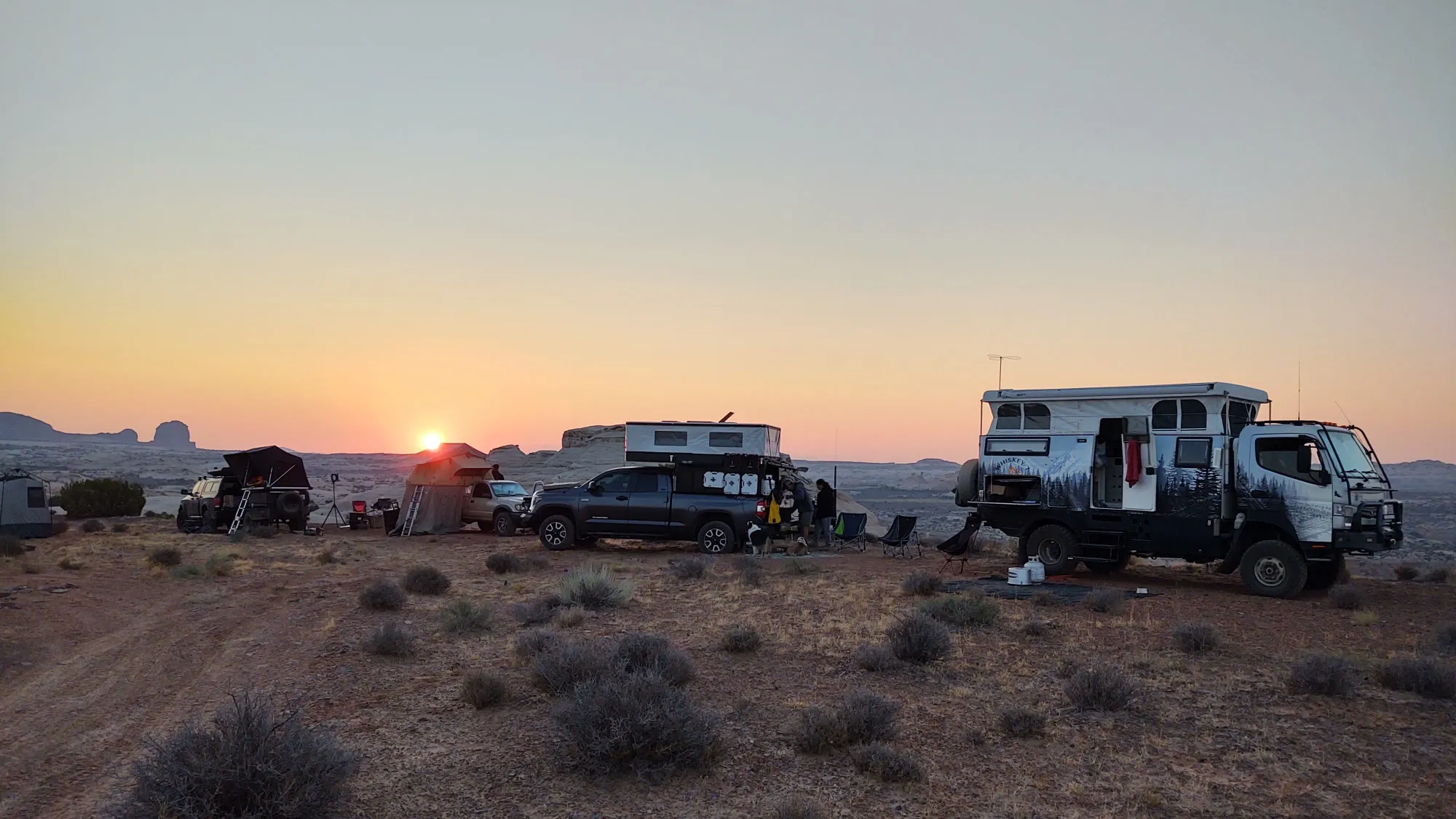
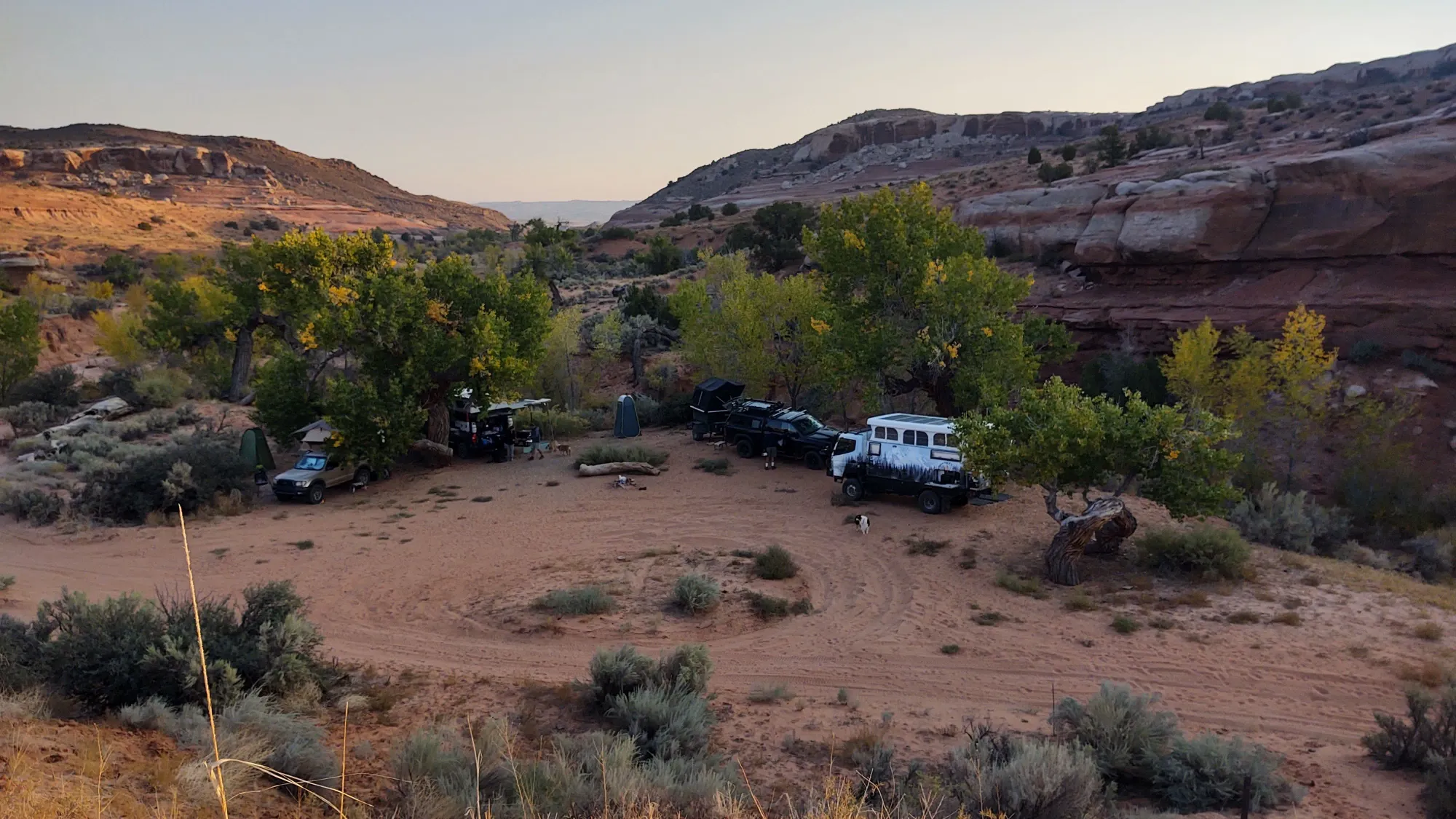
Backcountry camping is an adventurous option, allowing you to immerse yourself in the natural beauty of the area. However, it requires a backcountry permit for all overnight stays, which can be obtained for free at any visitor center or established trailhead. Whether at a developed site or in the backcountry, it's crucial to adhere to Leave No Trace principles. This includes camping only in existing sites, using a camp stove instead of open fires, and packing out all waste, including food leftovers and garbage.
Lastly, respect for the environment and local wildlife is paramount. Do not feed wildlife, touch petroglyphs, or deface rocks. Dogs are allowed in most areas but must be leashed on specific trails and within certain sections to protect both the environment and other visitors. By following these guidelines, you contribute to preserving the Grand Staircase-Escalante National Monument for future generations while enjoying its vast, wild landscapes responsibly.
Essential Gear and Modifications
Vehicle Preparation and Maintenance
Before embarking on any off-roading adventure, ensuring your vehicle is in top condition is crucial. Start by addressing any minor issues, as these can become exacerbated with added weight and larger tires. It's advisable to have a baseline maintenance check, especially if the vehicle's maintenance history is unknown. This includes checking all fluids to ensure they are fresh and adequate for the demands of off-road driving.
Driving Skills and Vehicle Recovery
Off-roading demands a unique set of driving skills distinct from regular on-road driving. It's essential to master techniques such as operating four-wheel drive systems, using low-range transfer cases, and navigating different terrains like mud and rocks. Additionally, proper recovery points are vital for safely extracting a vehicle if you find yourself stuck. Ensure your vehicle is equipped with strong, aftermarket recovery points to avoid damage or injury during such operations.
video of what to expect in the Grand Staircase
Overlanding Modifications and Gear
For a successful and comfortable journey, several modifications and pieces of gear are indispensable:
- Upgrade to off-road tires for increased grip and puncture protection. Depending on your vehicle, larger tires may also provide a beneficial lift.
- Protect your vehicle's underbody with sturdy skid plates and rock sliders to prevent damage from rough terrain.
- Install a reliable roof rack for carrying essential items like tents, recovery tracks, and water containers. A spacious rooftop tent and a 270-degree awning can greatly enhance your camping experience by providing comfort and shelter.
- For food preservation and meal preparation, invest in a high-quality portable fridge and a dual-burner stove. Also, consider durable camping chairs and a portable table for added convenience at your campsite.
- Essential recovery gear should include items like a high-lift jack, recovery tracks, and a winch to handle various off-road challenges.
By thoroughly preparing your vehicle and equipping yourself with the right gear and skills, you can enhance your safety, comfort, and enjoyment while exploring the rugged terrains of the Grand Staircase-Escalante National Monument.
Challenges and Safety Tips
Understanding and Preparing for Natural Hazards
Flash floods pose a significant risk, especially during July, August, and September. It's crucial to avoid narrow canyons and washes during stormy weather to prevent being caught in these sudden floods. Similarly, hypothermia is a risk due to cold, wet conditions combined with wind and exhaustion. Early detection of group members is vital, and treatment involves rewarming the individual, removing wet clothing, moving to a heat source, and providing warm drinks.
A small water crossing in the Grand Staircase
Wildlife and Terrain Precautions
When traversing through thick brush or rocky outcroppings, heightened alertness is necessary. Using a walking stick to probe underbrush or around crevices can help detect snakes or other potential hazards. Additionally, wearing high-top boots or snake chaps can provide an extra layer of protection against bites. It's also advised to carefully move piles of brush, logs, and tarps where snakes may be hiding. Always travel in groups when possible to ensure help is at hand in case of an emergency like snake bites or accidents.
Essential Safety Gear and Practices
Carrying appropriate safety and communication gear is essential for any overlanding adventure. This includes navigation tools, communication devices, self-recovery equipment, and a comprehensive camping and safety gear set. Also, having a trauma tourniquet and a 'stop the bleed' kit in your first aid supplies can be crucial in managing injuries until professional medical help is available. Always ensure you have means to communicate for help, like an Amateur Radio, Sat Phone, Garmin InReach, or a cellular device, and understand the limitations of these devices.
Wildlife and Natural Features
Biodiversity at Grand Staircase-Escalante
The Grand Staircase-Escalante National Monument, sprawling over 1.9 million acres, is a sanctuary for diverse wildlife. This region is home to an impressive array of mammals such as the elusive mountain lion, black bears, and desert bighorn sheep, each adapted to the unique desert environment. The monument also supports over 50 species of reptiles and amphibians, providing a critical habitat for these creatures. Bird enthusiasts can spot over 200 species of birds, including the endangered California condor and the peregrine falcon, making this area a significant bird-watching destination.

Paleontological and Cultural Significance
The monument's grounds are not only rich with living biodiversity but also with historical treasures. Paleontological excavations have unearthed fossils that shed light on the ecosystem changes at the close of the dinosaur era, including discoveries of marine and brackish water mollusks and 20 new species of dinosaurs. Additionally, the area is steeped in cultural history, featuring rock art panels and artifacts from the Ancestral Puebloan, Fremont, Southern Paiute, and Navajo cultures, which highlight the human history intertwined with this landscape.
Geological Wonders and Recreational Activities
Grand Staircase-Escalante's dramatic landscape is marked by iconic geological formations such as the White and Vermilion Cliffs, the expansive Kaiparowits Plateau, the Escalante Natural Bridge, and the striking Grosvenor Arch. These formations are not only visually stunning but also offer numerous recreational opportunities. Visitors can engage in hiking, wildlife observation, and photography, exploring the vast desert lands and immersing themselves in the natural beauty of the monument.
Local Regulations and Permits
When exploring the Grand Staircase-Escalante National Monument, it's crucial to adhere to specific local regulations and guidelines to ensure both your safety and the preservation of the natural environment. One important rule is regarding water consumption. Visitors should only drink water from developed, maintained systems available at recreation sites. All other water sources in the monument are untreated and might contain pathogens that can cause giardiasis, a serious intestinal illness. Therefore, any water from streams, rivers, or other natural sources must be properly treated before consumption to prevent health issues.
Additionally, the monument has undergone significant changes in its land management policies. Previously, under the Trump administration, the monument faced a substantial reduction of about 48% of its lands, approximately 900,000 acres. This reduction has raised concerns about the potential impacts on wildlife habitats, as well as on geological, and paleontological research, and the preservation of petroglyphs and other cultural artifacts. Such changes underscore the importance of staying informed about current regulations and land statuses when planning your visit.
For overlanders and adventurers driving through the monument, knowing which vehicles are suitable is also key. Popular choices include the Third-Gen Toyota Tundra, Second-Gen Chevrolet Colorado Z71, and the JL Jeep Wrangler. These vehicles are favored for their reliability and performance in handling the rugged terrain of the monument. Always ensure that your vehicle complies with the park's regulations and is capable of navigating the backcountry roads safely.
Conclusion
Traversing the sweeping landscapes of the Grand Staircase-Escalante National Monument offers an extraordinary adventure into the heart of Utah's vast wilderness, showcasing the importance of meticulous preparation and respect for the natural world. This comprehensive guide has navigated through the essential aspects of planning your journey, from selecting the ideal vehicle and understanding local regulations to embracing the unique experiences each trail and site presents. The monument's rich biodiversity, geological wonders, and expansive backcountry roads provide a dynamic canvas for overlanders to immerse themselves in activities that span from serene to thrilling, underscoring the monument's significance as a haven for both adventure and conservation.
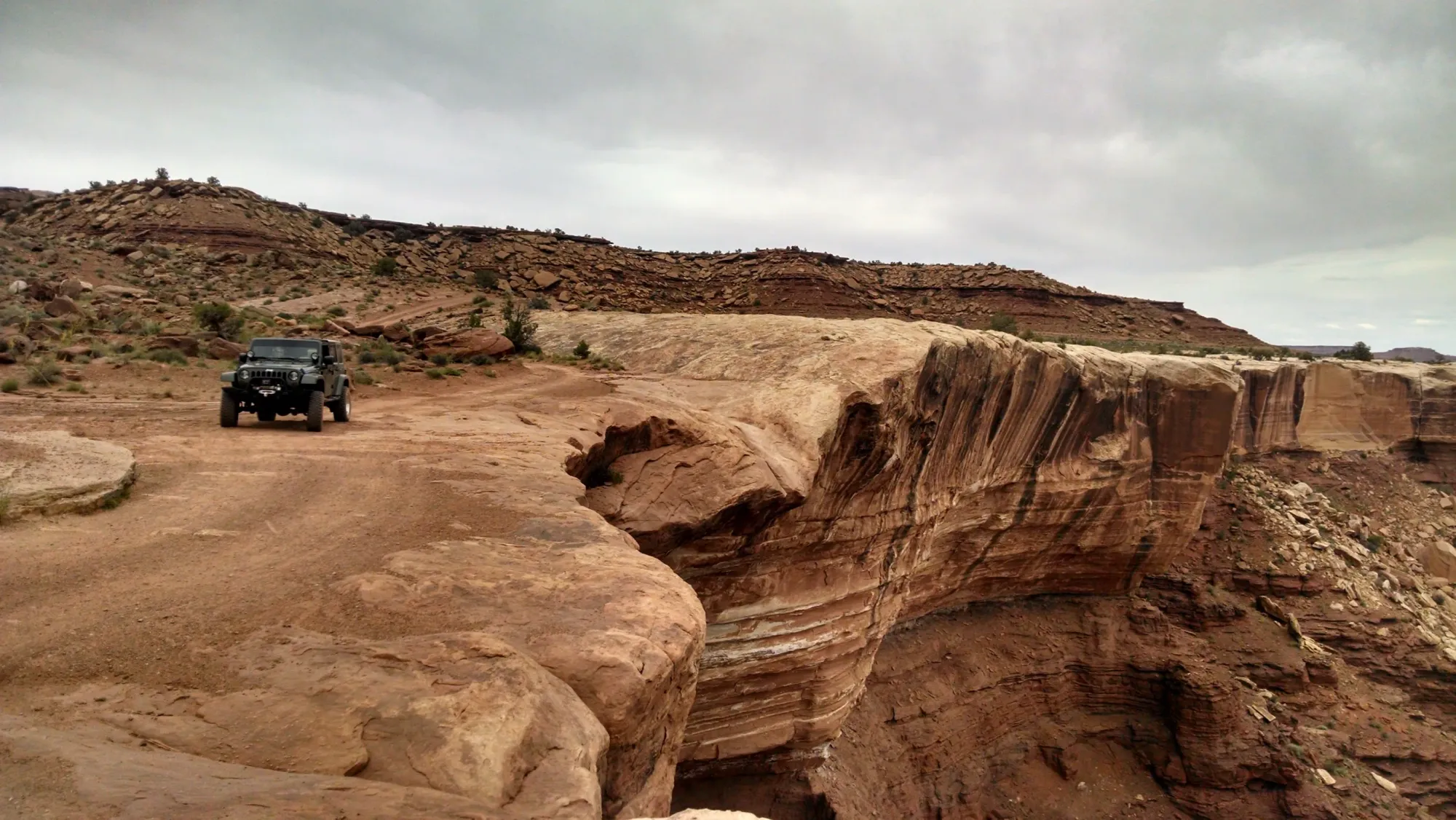
As adventurers seek to explore the untouched beauty of the Grand Staircase-Escalante, it remains crucial to approach this remarkable wilderness with a sense of stewardship and wonder. Embracing the principles of Leave No Trace and adhering to safety precautions ensures that these majestic landscapes remain pristine for future generations to enjoy. For those eager to stay updated on the latest tips, routes, and expert advice for Overlanding adventures, signing up for our free newsletter will keep you connected to a community of like-minded explorers. The journey through Grand Staircase-Escalante is not just about the trails you traverse but also about the memories and lessons learned along the way, inviting us all to embark on a journey of discovery and respect for the natural world.
FAQs
1. How much time is typically needed to explore Grand Staircase Escalante?
To truly appreciate Grand Staircase Escalante, plan for at least 2 to 3 days. This duration allows for a thorough exploration, including the opportunity to venture into side canyons and hike along the Escalante River, a notable tributary of the Colorado River.
2. Is Grand Staircase Escalante worth visiting?
Absolutely! Grand Staircase Escalante offers well-maintained facilities and ample parking. The trails, though challenging, lead to stunning views and fascinating displays of petrified trees. It's an excellent spot for a refreshing break, especially if you're heading towards Bryce Canyon.
3. Can you drive through Grand Staircase Escalante?
Yes, driving through the entire monument is possible via two main routes. In the west, Cottonwood Canyon Road connects Highway 12 in the north to Highway 89 in the south. In the east, Hole-in-the-Rock Road (BLM 200) spans the monument from Escalante to its terminus at Glen Canyon National Recreation Area.
4. What are the costs associated with visiting Grand Staircase Escalante?
There is no fee to enter Grand Staircase-Escalante National Monument. However, free permits are mandatory for anyone planning to camp overnight or backpack in the backcountry.
Thanks for reading, we encourage you to sign up for our free newsletter below.
Brent Conklin
Whiskey 7 Backroads
